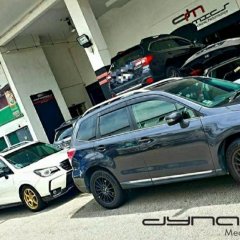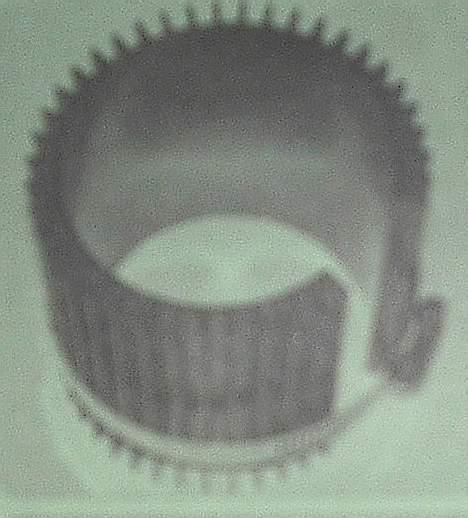Search the Community
Showing results for tags 'Heat'.
-
DM LED HEAD LIGHTS ================== 2500 lumens LED Headlights ( lastest technology ) energy savings and white light projection. Non heat emission and will not damage headlamp appearance unlike HID. LED Open for bookings now. Message or call us at 6341 6164 to enquire.
- 5 replies
-
- head lights
- headlights
-
(and 6 more)
Tagged with:
-
Geography is what most people understand to be the study of where countries are. That's why not knowing where a country is on a map will result in your friends saying, "Never study geography ah?" Of course, geography is deeper and more complex than just finding countries and cities on a map. It...
- 3 comments
-
- workout
- working out
- (and 14 more)
-
Just like donkey years back, scientists once said that lard is bad for our health but over the past few years, researches have shown that lard is a good source of fats that support a healthy heart. What about MSG? Isn’t it bad for me? Source: https://www.channelnewsasia.com/singapore/...
-
Is the weather really that warm that you need to ride without clothes? This motorcyclist thinks so. Spotted on SGRV's Facebook and many other sources, a short-hair motorcyclist can be seen riding nude by the camera bike traveling along PIE towards changi. The nude rider then left the highw...
-
where can i find foam based heat insulating material? i wanna slap it over my airbox... and do my own heat shield any clues?
-
By Tan Weizhen - 6 hours 19 min ago SINGAPORE
-
Weather's a b!tch nowadays so bros better take care go drink more water. From CNA: http://www.channelnewsasia.com/stories/sin...1208656/1/.html Heat stroke cases increase with rising temperatures By Kheng Leng/Alice Chia | Posted: 19 June 2012 2148 hrs
-
Check this out guys ... it's sold in Japan. Simple concept, just mount in onto your oil filter and it's blade will help cool the oil filter down. Just a simple heat sink concept. Maybe a few CPU heatsink mount together also can ;-)
-
Just replaced my rear brake pad and noticed that it "bite" more and car is more reluctant to move . E.g have to step on accelerator before the car will move while previously it will slowly move ... Likewise it will slow down faster than previous. Also the brake disc , rim and tyre are now much hott...
-
Mother in tears after seeing her baby's severe burns from being left on heat packs When she saw her baby in pain with a large part of her back burned pink and raw, all Madam Farah (not her real name) could do, was to bawl her eyes out. According to a report in The Straits Times, on Oct...
-
Hi all, Anyone here have done it before? any downside of doing so? What are the estimate installation cost? Thank you very much. Regards,
-
Hi all, May I know if anyone knows of local supplier(s) for heat sensitive ink or paint? If not, are there any tried suppliers overseas that will ship fast to singapore? Thank you very much!
-
Yahoo report : Apple's iPad throws off much more heat: tests SAN FRANCISCO (Reuters) - Apple Inc's new iPad throws off a lot more heat than the previous version, lending weight to complaints on Internet forums that the hot-selling tablet computer could get uncomfortably warm after heavy use, an...
-
Any one have or know any workshop that can customize heat shield. I know of some FL outside doing with those Aircon form. But I am not looking at that. I am looking for those aluminum type. Please advice on that Tks
-
Monks face pressure of foreign competition Income from prayer sessions down as foreign monks charge lower rate Local monk Ang Juat Chong says he spoke to his MP, Mr Yaw Shin Leong, about unlicensed monks working in Singapore. -- ST PHOTO: SAMUEL HE Some monks here are feeling the heat...
-
Seems like internet is under very close watch nowadays from the authorities Cleaning up to prepare for the big erection? Seems like SBF website from the TV news. Saw the names, - LaserBabes - AINO
-
hi , apart from cutting the bonet or to change to vented ones... to raise the rear part of the bonet to vent heat, qns is how much to be raise. hear before from workshop. raise abt 12~15mm the gap. is it good? wat is recommended? adv : heat wont trap under bonet , lower temp....
-
As above.
-
I replaced my car original spark plug NGK LFR5A-11 with NGK LFR6A-11 (the stockist told me this model for my car). Is it OK, will there be any problem?
-
intend to get 2nd hand P80 or 9887 advice anyone?
-
I just changed a new job and they provide us with a open space parking area, as I'm new, I suay suay kena those lot without shade. Everyday during lunch time I had to waste 10-15mins to wait for the heat to cool down. The seat and steering wheel is like on fire. I did not install any v-cool or s...

















